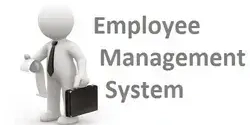Essential Small Business Overdraft Tips for Effective Financial Management
Discover essential small business overdraft tips to enhance your financial management. Learn how to navigate cash flow challenges, minimize fees, and make informed decisions for sustainable growth.

Key Takeaways

- Understand Overdrafts: Overdrafts offer a safety net for small businesses, allowing access to funds beyond the account balance for unexpected expenses and cash flow gaps.
- Monitor Your Finances: Regularly tracking your business account transactions can help prevent overdrafts and keep your finances in check.
- Set a Repayment Plan: Establishing a clear repayment timeline for overdraft amounts is crucial to minimize interest and fees.
- Use Wisely: Treat overdrafts as a short-term solution for urgent needs, rather than relying on them for regular expenses to avoid a cycle of debt.
- Explore Alternatives: Consider options like business lines of credit and short-term loans for potentially better financial management and flexibility.
Running a small business can be a thrilling yet challenging endeavor, especially when it comes to managing your finances. One unexpected expense or cash flow hiccup can leave you scrambling, and that’s where overdrafts come into play. While overdrafts can provide a safety net, using them wisely is crucial to avoid falling into a cycle of debt.
In this article, you’ll discover practical tips to navigate overdrafts effectively. From understanding your bank’s policies to implementing smart budgeting strategies, these insights will empower you to maintain control over your finances. Let’s dive into the essentials that can help you keep your business thriving, even when the unexpected happens.
Understanding Overdrafts

Overdrafts serve as a financial cushion for your small business, allowing you to manage unforeseen expenses or cash flow gaps effectively. Understanding how overdrafts work helps you leverage them to maintain financial stability.
What Is a Small Business Overdraft?
A small business overdraft is a facility provided by your bank that enables you to withdraw more money than your business account holds. This credit option typically comes with an agreed limit, allowing you to access funds beyond your available balance. Most banks charge interest on the overdrawn amount, making it critical to monitor your usage to avoid accumulating debt.
Why Businesses Use Overdrafts
Businesses often use overdrafts for several reasons:
- Cash Flow Management: Overdrafts provide immediate access to funds, ensuring you can cover operating expenses like payroll, rent, or inventory purchases during tight cash flow periods.
- Unforeseen Expenses: An unexpected repair or emergency can strain your budget. An overdraft allows you to address these issues without delay.
- Seizing Opportunities: If a supplier offers a discount for early payment or a unique business opportunity arises, an overdraft can help you act quickly without disrupting your cash flow.
- Flexible Financing: Unlike traditional loans, overdrafts offer flexibility. You only pay interest on the overdrawn amount, allowing you to manage your finances more efficiently.
Using overdrafts wisely is essential to keeping your small business thriving without succumbing to unnecessary debt.
Benefits of Overdrafts for Small Businesses

Overdrafts offer significant benefits for small businesses, enhancing financial management and operational efficiency. Understanding these advantages helps you leverage overdrafts effectively.
Immediate Access to Funds
Overdrafts provide immediate access to funds, crucial for managing cash flow gaps. When you encounter unexpected expenses, such as urgent equipment repairs or essential bills, an overdraft allows you to cover these costs quickly. This immediate access prevents disruptions in operations and helps you maintain momentum in your business activities.
Financial Flexibility
Financial flexibility comes with overdraft facilities, enabling you to borrow only what you need at any moment. Unlike fixed loans that require borrowing a predetermined amount, overdrafts allow you to draw on funds as necessary. This flexibility supports strategic financial management, giving you the freedom to allocate resources to various aspects of your business, such as product development or marketing initiatives. Utilizing an overdraft means you can address urgent cash needs without committing to a long-term borrowing structure, enhancing your adaptability in a fast-paced business environment.
Tips for Managing Small Business Overdrafts

Managing a small business overdraft effectively requires vigilance and a strategic approach. Implement the following tips to maintain financial stability and support your business goals.
Monitor Your Account Regularly
Monitor your business checking account regularly to prevent overdrafts. Record every deposit, withdrawal, and transaction, including checks and debit card purchases. Use online and mobile banking tools to track your current balance in real-time. Set up alerts for low balances, recent transactions, and unauthorized access. This proactive management helps you anticipate upcoming transactions and avoid unexpected overdrafts.
Set a Repayment Plan
Set a repayment plan to address any overdraft promptly. Overdrafts lack fixed repayment schedules, which can lead to accumulating interest and fees. Establish a timeline for repaying the overdrawn amount as soon as cash flow permits. Prioritizing repayment keeps your finances under control and minimizes costs associated with the overdraft.
Use Overdrafts Responsibly
Use overdrafts responsibly to enhance your cash flow without jeopardizing financial health. Consider overdrafts as a temporary solution for urgent expenses rather than a long-term strategy. Limiting the frequency of overdraft use can help maintain your business’s profit margin. Ensure that any overdrawn funds directly contribute to growth strategies or essential expenses, reinforcing your business model and sustainability.
Alternatives to Overdrafts

When considering alternatives to small business overdrafts, explore options like business lines of credit and short-term loans for better financial management.
Business Lines of Credit
Business lines of credit offer flexible financing for small business needs. With this option, you access a specific credit limit and only pay interest on the amount drawn. This structure supports cash flow management, allowing you to draw funds as needed for expenses like inventory, payroll, or business development. Many institutions provide competitive interest rates compared to credit cards or overdrafts. Establishing a line of credit requires a solid business plan, demonstrating your ability to repay borrowed amounts through revenues or growth strategies.
Short-Term Loans
Short-term loans provide a lump sum of cash for immediate financial needs. These loans typically come with a fixed repayment schedule, making budgeting straightforward. Businesses often use them for urgent cash flow issues, purchasing inventory, or funding marketing campaigns. While interest rates might be higher than long-term loans, the quick access to funds and clear repayment terms can make them a viable option for entrepreneurs looking to stabilize operations or invest in growth opportunities. Prepare necessary documentation, including your business financials and a detailed usage plan when applying for these loans.
Conclusion

Managing your small business finances can be challenging but knowing how to use overdrafts effectively can provide the support you need. By taking a proactive approach and implementing smart budgeting strategies, you can navigate cash flow gaps with confidence.
Remember to monitor your accounts regularly and establish a clear repayment plan. This way, you can avoid falling into a cycle of debt while still enjoying the flexibility that overdrafts offer.
Don’t forget to explore alternative financing options as well. They can complement your financial strategy and help you seize opportunities for growth. With the right tools and knowledge, you can keep your business thriving even in uncertain times.
Frequently Asked Questions

What is a small business overdraft?
A small business overdraft is a banking facility that allows businesses to withdraw more money than what is available in their account, up to an agreed limit. It provides immediate access to funds to help manage cash flow gaps or unexpected expenses.
How can overdrafts help small businesses?
Overdrafts can serve as a financial cushion, offering immediate funds for urgent expenses, preventing operational disruptions, and providing flexibility that traditional loans may not offer. They are useful for managing unforeseen costs and seizing opportunities.
What are the risks of using overdrafts?
While overdrafts can provide quick access to funds, they also come with risks, such as high-interest rates and potential debt accumulation. Using them irresponsibly can lead to cash flow issues, so it’s crucial to manage overdrafts carefully.
How can I manage my business overdraft effectively?
To manage your overdraft effectively, regularly monitor your account to avoid excessive overdraws, establish a repayment plan, and use the overdraft for urgent needs only—never as a long-term financing solution.
What alternatives exist for small business financing?
Alternatives include business lines of credit and short-term loans. Business lines of credit offer flexible funding, allowing you to borrow what you need and pay interest only on the drawn amounts. Short-term loans provide lump sums with fixed repayment schedules.
How should I choose between an overdraft and a loan?
Choosing between an overdraft and a loan depends on your needs. Use an overdraft for short-term cash flow issues and a loan for larger, one-time expenses or investments. Consider interest rates and repayment terms carefully.
Image Via Envato
This article, "Essential Small Business Overdraft Tips for Effective Financial Management" was first published on Small Business Trends











































































